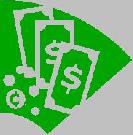
 |
|
| Financial Terms | |
| Item number |
|
Information about financial, finance, business, accounting, payroll, inventory, investment, money, inventory control, stock trading, financial advisor, tax advisor, credit.
Main Page: tax advisor, finance, stock trading, inventory, payroll, business, accounting, credit, |
Definition of Item number
Item numberA number uniquely identifying a product or component.
Related Terms:Cash-equivalent itemsTemporary investments of currently excess cash in short-term, high-quality Counterpart itemsIn the balance of payments, counterpart items are analogous to unrequited transfers in the Law of large numbersThe mean of a random sample approaches the mean (expected value) of the NUMBER OF DAYS SALES IN RECEIVABLES(also called average collection period). The number of days of net sales that are tied up in credit sales (accounts receivable) that haven’t been collected yet. Line itemGeneric types of assets, liabilities, income or expense that are common to all businesses and Extraordinary itemA transaction that rarely occurs, and which is unusual, such as balancing itemVariable that adjusts to maintain the consistency  Federal Employer Identification NumberA unique identification number issued Financial Numbers GameThe use of creative accounting practices to alter a financial statement Nonrecurring ItemsRevenues or gains and expenses or losses that are not expected to recur Special ItemsSignificant credits or charges resulting from transactions or events that, in the Item master fileA file containing all item-specific information about a component, Nonsignificant part numberAn identifying number assigned to a part that conveys Part numberA number uniquely identifying a product or component. Significant part numberAn identifying number assigned to an item that conveys Slow-moving itemAn inventory item having a slower rate of turnover than the  PIN (personal identification number)A secret code that you use to access your bank account at a bank machine or at a point of sale (POS) terminal. You may also have a PIN for banking by telephone. Fair ValueThe amount at which an asset could be purchased or sold or a liability incurred or ExplodeThe multiplication of component requirements itemized on a bill of material Packing slipA document attached to a customer shipment, describing the contents Pallet ticketA document attached to a pallet, showing the description, part number, Interac® Direct PaymentInstead of paying with cash or a credit card, Interac Direct Payment allows you to pay for your purchase with a debit card, such as your bank card. The amount of the purchase is electronically debited, or withdrawn, from your bank account (see debit card). Related to : financial, finance, business, accounting, payroll, inventory, investment, money, inventory control, stock trading, financial advisor, tax advisor, credit. |